Extra-curricular activity - 2013
China workshop
Introduction
This semester I had been given the chance to do a three-week DESIS-Lab workshop in Taicang, China. Without knowing what we were going to do I wanted simply to take this opportunity since it would be a valuable experience anyhow. Therefore I did not have a specific goal, but I wanted to be open and explore the possibilities of design in the culture of China. At the start it became clear that the workshop was focused around the concept of ‘Interactive Patina of Culture’ (IPoC) and the aim of the workshop was not only to explore the concept of IPOC but also to experience and learn to design in a different culture with students from this culture.
The workshops
To provide us with skills to quickly go into the making process, we had some afternoon workshops in cardboard modeling and programming. During the rest of the weeks I got more in depth with programming and integrating motors into the cardboard models. Also I have used a Microsoft Kinect in our interactive prototype and learned what the possibilities are with such a system and how to program this. I am very glad that I learned this hands-on skills and it really allowed me to create quick, but interactive and nicely looking models. These skills I can take with me for prototyping in the future.
Exploring through making
During the project we were very much encouraged to make things, rather than only thinking and talking about it. In the early stages of the project this is harder, since your ideas are not so concrete yet, especially during this project in which the subject of Interactive Patina of Culture was a very vague concept. However I do know that when you make it, you automatically have to make your idea concrete and tangible. Therefore it becomes easier to understand for yourself and for others. What helped me much in forcing the team and myself in the making process were the presentation that we had to give after each day of work. Progress is always best shown in physical models rather than a spoken story. I applied this method of short-term presentations also in the project this semester along with the other Dutch students who participated in the China workshop. This worked well and I want to organize these feedback presentations more often during my final year here at my masters.
Although I was familiar with exploring a concept through making, I did not yet have experience in using this for merely research purposes. After I came back I experienced the same approach during the two-week module. I learned that research through design can indeed give very valuable and rich insights, that might not have been clear otherwise and is fun to do at the same time. I would like to explore how I could integrate this more in my M2.1 than I normally would do.
The social experiment
The inter-cultural setting was very interesting to work in. As I learned from my long journey to South East Asia and Indonesia, interacting with other culture sometimes provides even more insight in your own culture than theirs. In this workshop it was no different, only now I had to work together with the Chinese students. I have learned a lot of the Chinese culture and gain a lot more respect for these people. Obviously the cultural differences caused for difficulties as well.
During the introduction phase I started to work with my team-members, as I would have done in any other project. I thought I had a pretty good idea of what needed to be done, so I immediately took the lead. During the project I noticed I had to pay attention to every step my fellow Chinese student did to preserve the quality of work I hoped to achieve. This did not workout well, so I changed my attitude toward my team. If we wanted to achieve a good result together, I figured that we needed to understand each other first. Therefore I took a step back and gave them space for input of their own. If I was not sure if that was the right decision I first wanted to understand their reasoning, before judging it, and they did the same with me. I learned that sharing your ideas and really trying to understand each other before judging the ideas really worked out well to create a qualitative concept that we were all happy about and was created with trust in each other’s work.
What I still found interesting was the approach I took in the beginning, which was similar to the approach of the other Dutch student. It seems to me that the Dutch are eager and effective working people, but want to work from our own standards of quality. If others did not understand the “greatness” of our ideas, it was them who did not understand and we would provide the answers for them. I believe that this a sort of superior attitude is typical Dutch, since we have done this for millennia, for example in the time of the colonies.
I learned it is easy to think other people do not understand you, while you actually do not understand the fundamental logic of the other culture. I also learned that this is one of the most difficult things to change, because when I was in China I realized how deep culture is integrated in our logic, our way of thinking and our daily live. Yet investing time and effort to really understand each other can bring a lot of richness to our lives and our creations.
Overall experience
This experience was absolutely amazing in the sense of culture, skill development, design process and workflow. I was amazed how much we all could achieve in only three weeks. The dynamics in the group were wonderful as well and again I can see how much positive impact this has had on the workflow and the quality of the designs.
The subject of Interactive Patina of Culture was interesting as well and I have learned what this concepts means during the pursuit to explore this concept. Yet the subject itself I do not see as a fundamental element in my learning process of these three weeks. Overall it was an experience I would not have wanted to miss from both personal and professional level.
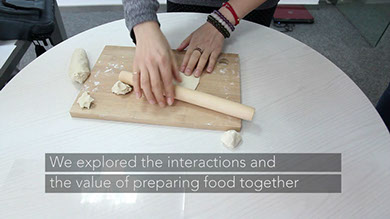
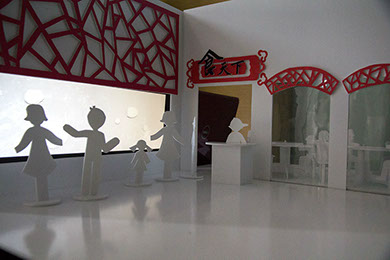
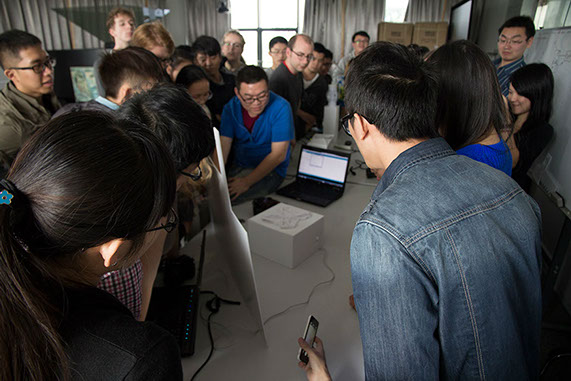
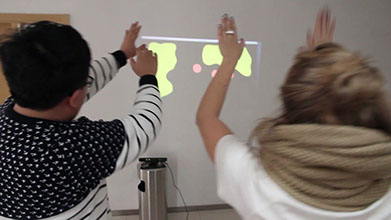
Prototyping with Microsof Kinect and Processing
Final model made in cardboard
Reflecting together in the process of research through design
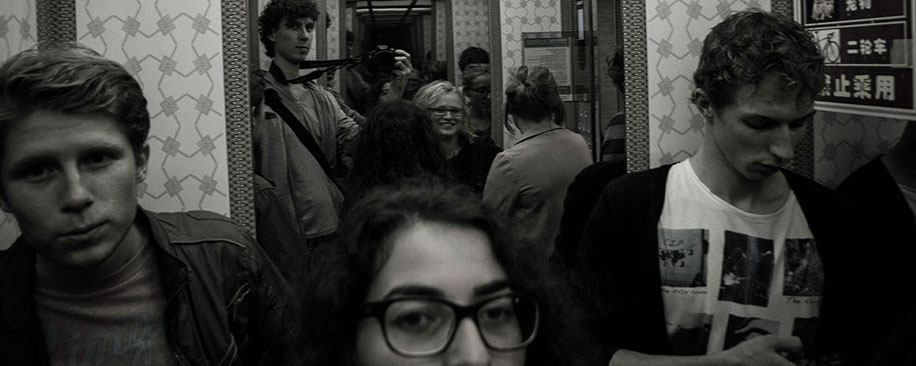
Three week workshop in Taicang, China
